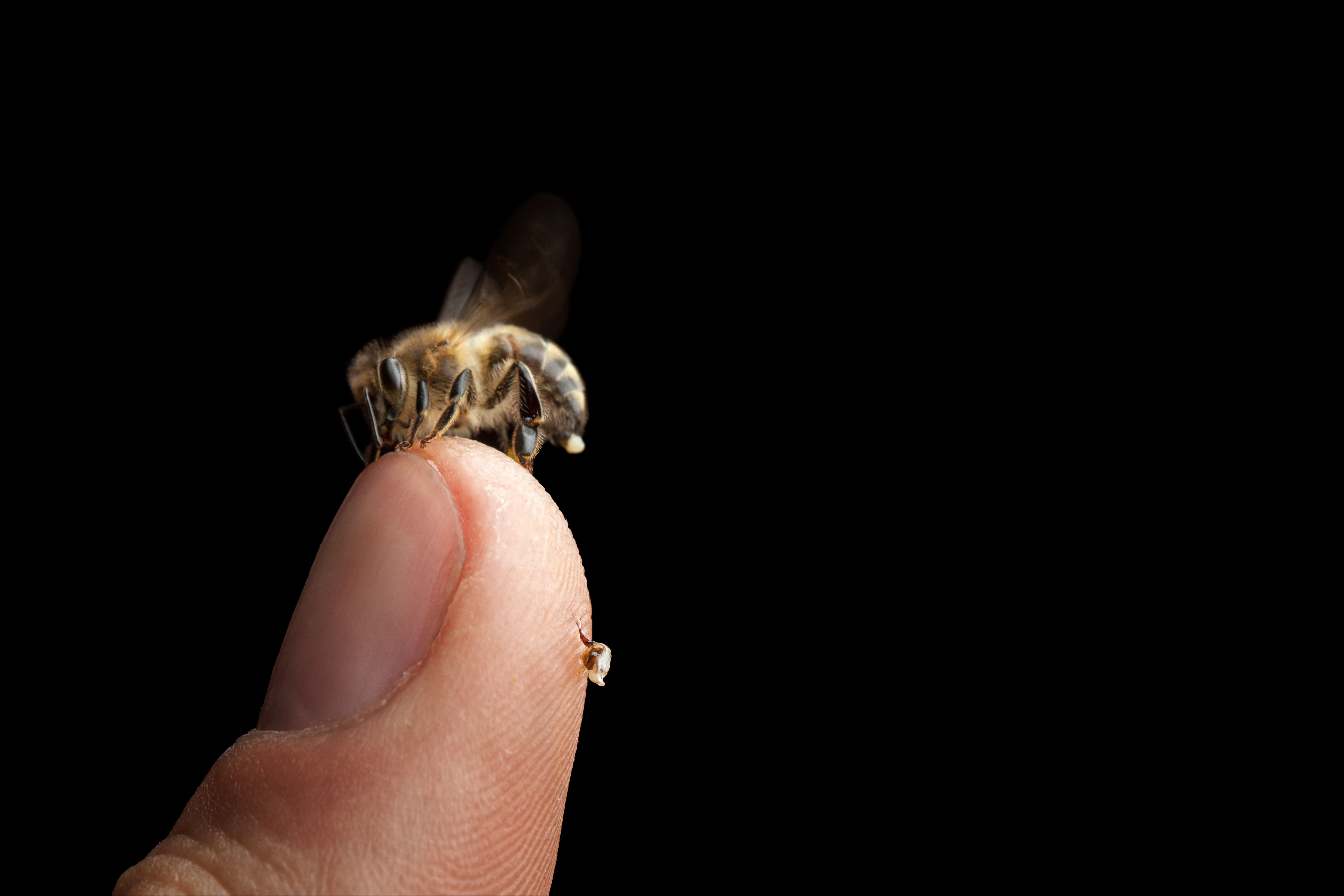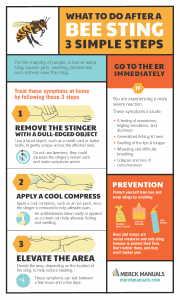
How to Treat a Bee Sting
What’s the best way to treat a bee or wasp sting? It seems every family has their own secret remedy. From meat tenderizer or tobacco juice to vinegar or baking soda, there’s no shortage of “cures” out there and people who swear by them.
In reality, these home remedies have no real scientific or medical basis. While most aren’t necessarily dangerous, they also aren’t particularly effective. But that doesn’t mean there’s nothing individuals and parents can do after a bee or wasp sting. Taking the right steps can minimize the typical pain, redness, swelling, and itching that most people suffer after a sting. For people with a severe allergic reaction, the right response could save their life.
What Does a Bee Sting Feel Like?
For most people, a sting won’t cause more than pain, swelling, and redness right around the sting—what’s known as a local reaction.
However, a small percentage of people are allergic to insect stings and suffer a much more severe and dangerous reaction, known as a generalized reaction. Stings in these people may cause anaphylaxis and can be fatal. In fact, between 60 to 70 people in the U.S. die every year as a result of allergic reactions to stings, according to estimates from the Centers for Disease Control and Prevention. Tens of thousands more have very serious reactions that aren’t fatal.
Next time you or a child receives a nasty sting, look for signs of a generalized allergic reaction.

Signs of a generalized allergic reaction
Symptoms usually develop very quickly and may include:
- A feeling of uneasiness, tingling sensations, and dizziness.
- Generalized itching and hives
- Swelling of the lips and tongue
- Wheezing and difficulty breathing
- Collapse and loss of consciousness
Anyone who has any of these symptoms should go to the emergency department immediately.
People who had a generalized allergic response in the past will very likely have one again after another sting. However, sometimes people who never had an allergic reaction on previous stings have a generalized allergic reaction to their next sting. Fortunately, this first reaction is less likely to be one of the fatal ones.
People who know they’re allergic should always have access to an epinephrine auto-injector. An auto-injector is a portable device that injects you when you push it against your skin—you don’t have to know how to “give a shot.” Epinephrine (adrenaline) is a drug that treats allergic reactions and can be life-saving. Use the auto-injector at the first sign of an allergic reaction.
Patients and parents should note—a more severe local reaction (greater pain or more extreme swelling) is not an indicator of increased risk for a generalized reaction, nor is receiving multiple stings.
If there’s no sign of a generalized allergic reaction, follow these 3 steps
Up to 1 million people go to the Emergency Department for bee stings every year. Most of these visits are for local reactions that you can treat at home by following these steps.
1. Remove the stinger with a dull-edged object
Bee stings and wasp stings are relatively similar, with one big exception. After a sting, honeybees leave a barbed stinger behind (and the honeybee dies). Wasps, on the other hand, have a smooth stinger that can sting multiple times without becoming detached from the insect.
Following a honeybee sting, the stinger should be removed as quickly as possible. In many cases, the bee also leaves behind the venom sack, which continues to pump venom as long as it stays intact. So the sooner you can remove it and the stinger, the sooner you can stop the flow of toxins.
A blunt object such as a credit card or butter knife gently scraped across the affected area is the best way to get rid of the stinger. Avoid using tweezers or anything else that could puncture or squeeze the venom sack and make symptoms worse.
2. Apply a cool compress
Once the stinger is out, a cool compress can help alleviate pain (just don’t dunk the whole area in ice). An antihistamine is taken orally or applied as a cream can help alleviate itching and swelling.
3. Elevate the area
Depending on the location of the sting, elevating the area can also reduce swelling.
The level of swelling caused by a sting can often be startling. In fact, a sting on the hand can result in the hand swelling up to twice the normal size. This swelling, along with the area feeling warm and tender, can sometimes be confused for infection—also known as cellulitis. Individuals and parents should know it’s rare for the infection to develop after a sting, especially within the first few days. The swelling caused by a local reaction may decrease within a few hours, but it can take a few days to fully resolve.
Keys to preventing stings
The best way to avoid complications from a sting is to avoid being stung in the first place. Here are a few things to keep in mind if you know you or your child will be outside and around bees or wasps.
- Avoid wearing bright colors, scented perfume, or hair sprays.
- Remember bees and wasps are social creatures. They only sting humans to protect their hive. The old rule of thumb is true—if you don’t bother them, they won’t bother you.
- Bees and wasps are pretty slow fliers—most people can get away from them just by walking quickly.
For further information please contact the professionals at Quality Care ER today.



.jpg)
